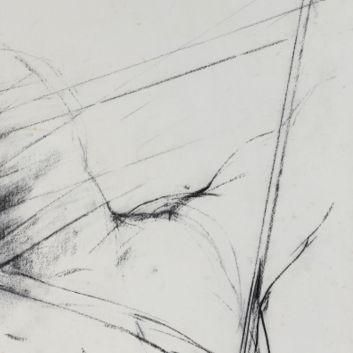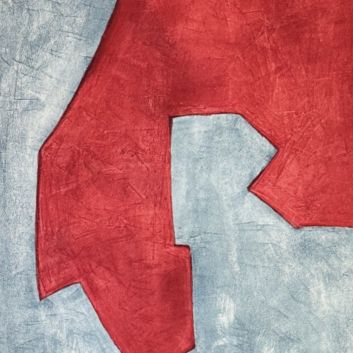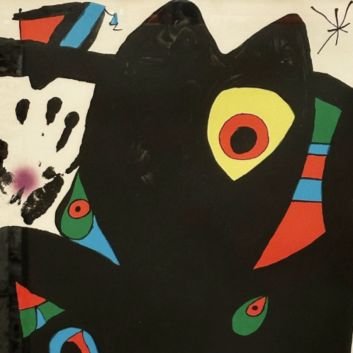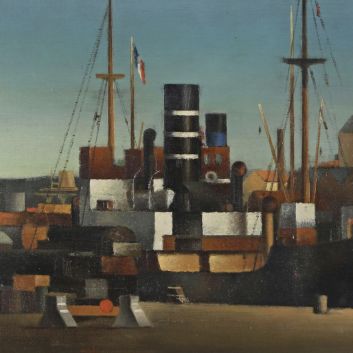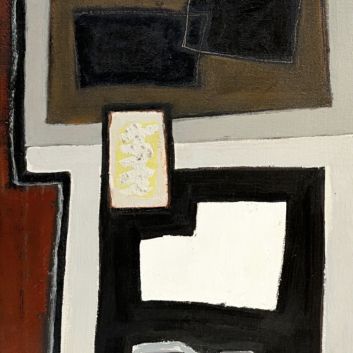Cote et valeur des tableaux, dessins, peintures de Raymond Guerrier
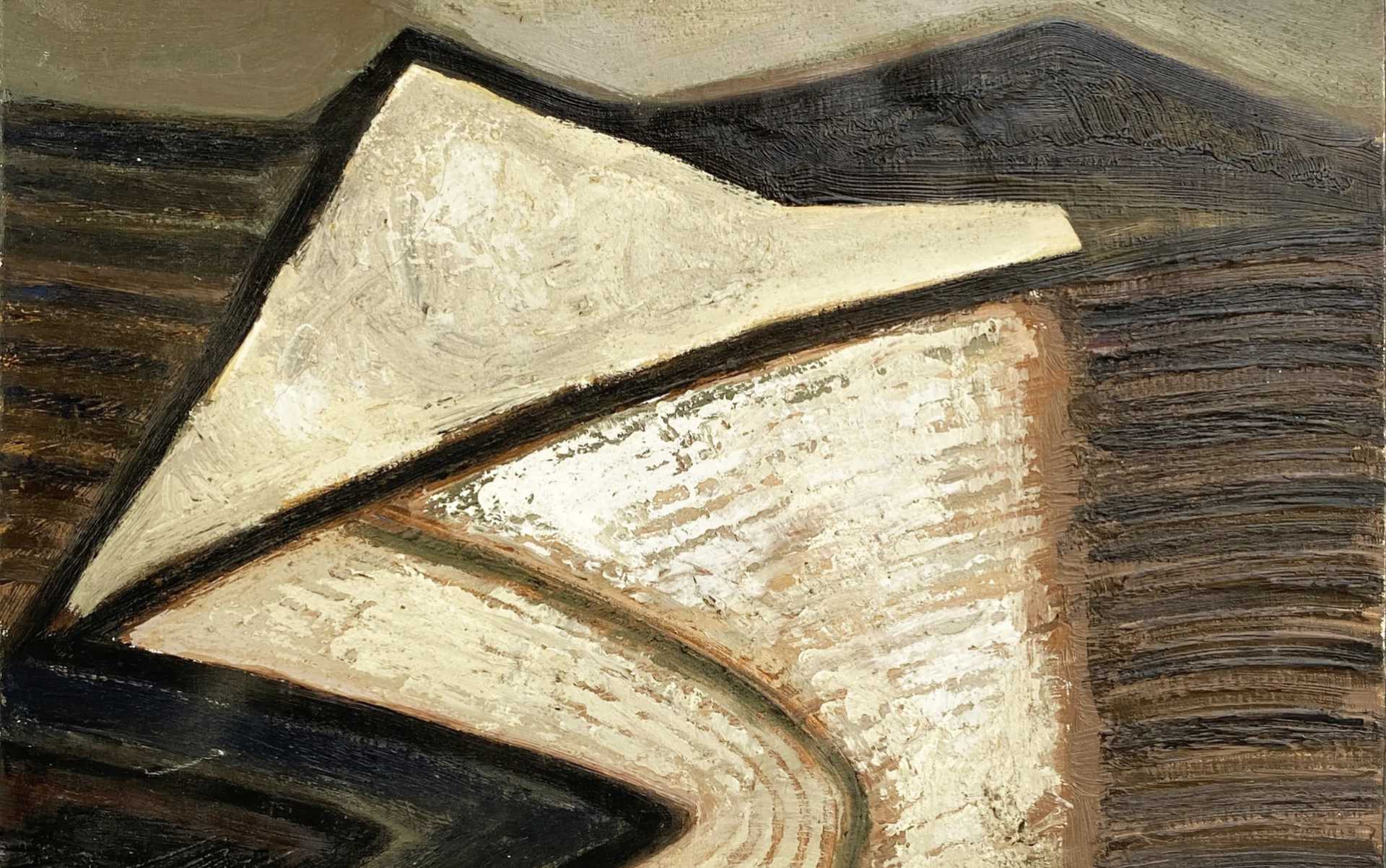
Si vous détenez une œuvre réalisée par l’artiste Raymond Guerrier ou d’après son travail et que vous souhaitez connaître sa valeur, nos experts et commissaires-priseurs agréés par l’État vous aiguilleront.
Nos spécialistes réaliseront une expertise gratuite de votre œuvre, et vous transmettront une estimation précise de sa valeur sur le marché actuel.
Par la suite, si vous désirez vendre votre œuvre, nous vous orienterons vers le meilleur dispositif possible pour en obtenir un prix optimal.
Cote de l’artiste Raymond Guerrier
Raymond Guerrier connait un grand succès de son vivant grâce à sa participation à certaines manifestations majeures de son temps. Il s’impose alors rapidement comme une valeur sûre du marché de l’art. Aujourd’hui, ses œuvres ont du succès en salle des ventes et attirent grand nombre de collectionneurs.
Ses pièces s’échangent principalement en France et aux États-Unis. Le prix auquel ses œuvres se vendent sur le marché des enchères s’échelonne entre 10 et 6 600€, un delta conséquent mais qui en dit long sur la valeur qui peut être attribuée aux œuvres de l’artiste.
En témoigne son huile sur toile sans titre à dominante rouge et noire, adjugée 6 500 € en 2023, tandis qu’elle était estimée entre 1 500 et 2 000€.
Ordre de valeur allant du plus basique au plus prestigieux
Technique utilisée | Résultat |
|---|---|
Estampe - multiple | De 10 à 300 € |
Dessin - aquarelle | De 40 à 2 300 € |
Sculpture - volume | De 50 à 2 900 € |
Peinture | De 130 à 6 600 € |
Réponse en - de 24h
Le style et la technique de Raymond Guerrier
Autodidacte, Raymond Guerrier découvre l’art à travers les musées et les ateliers d’artistes parisiens. Dès les années 1940, il se rapproche des figures de l’École de Paris, un mouvement qui regroupe des artistes venus du monde entier pour trouver à Paris un terreau propice à l’expérimentation artistique.
Il s'inscrit alors dans une lignée marquée par l'abstraction, tout en restant attaché à une certaine figuration.
Ses premières œuvres témoignent d'une grande influence du cubisme et des expérimentations géométriques. Il s’inspire des formes anguleuses de la nature et de la ville, traduisant ainsi sa propre vision d’un monde ordonné, voire rigide.
Guerrier se passionne pour l’exploration des formes simplifiées, souvent imbriquées dans des compositions complexes où la lumière et l’ombre jouent un rôle primordial.
Dans les années 50, son art évolue vers des toiles où les couleurs sombres dominent, avec des aplats puissants et des formes épurées. Ses recherches artistiques se concentrent alors sur l'harmonie des volumes et des contrastes chromatiques.
La texture de ses œuvres, souvent travaillée en épaisseur, contribue à créer une dynamique entre le fond et la forme, donnant à ses tableaux une profondeur singulière.
À partir des années 60, Guerrier intensifie l’utilisation de la matière dans ses peintures. Il emploie des techniques mixtes, mêlant peinture à l’huile et collages, afin d’ajouter une dimension tactile à ses compositions.
Ses tableaux deviennent des espaces de confrontation entre des formes géométriques rigides et une matière plus libre, presque organique.
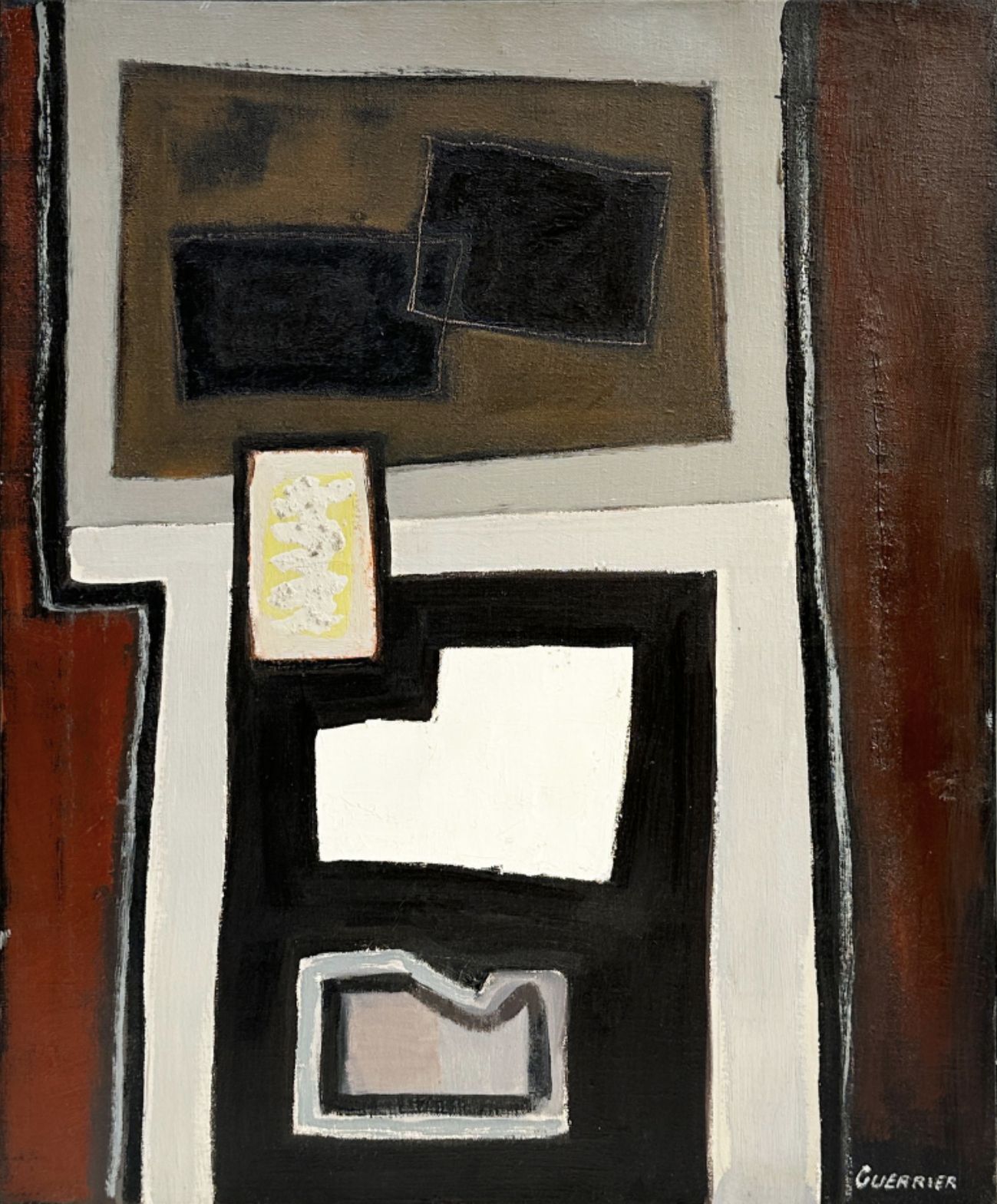
La vie de Raymond Guerrier
Raymond Guerrier naît en 1920 à Paris. Issu d’une famille modeste, il découvre très tôt sa passion pour l’art et, sans suivre de formation académique, il se forme en autodidacte.
Dans les années 1940, il se rapproche de l’École de Paris, un mouvement regroupant des artistes venus chercher à Paris un espace de liberté créative.
Attiré par la lumière et les paysages du Sud, il s’installe à Saint-Rémy-de-Provence, où il commence à peindre des œuvres inspirées des paysages provençaux.
En 1949, Guerrier expose pour la première fois à la prestigieuse Galerie de France, où ses œuvres retiennent l’attention pour leur approche géométrique et leur intensité chromatique. À cette époque, il fréquente d’autres artistes de l’avant-garde, influencé notamment par la rigueur cubiste et l’exploration des formes simplifiées.
Dans les années 1950, Guerrier connaît un succès croissant, exposant en France et à l’étranger, notamment en Suisse et en Allemagne.
Ses œuvres reflètent alors une quête de structure et d’harmonie, combinant des éléments de la nature avec des compositions géométriques, dans une approche proche de celle de ses contemporains tels que Nicolas de Staël.
En 1955, il s’installe définitivement à Ménerbes, en Provence, où il trouve un cadre propice à l’épanouissement de sa peinture. L’artiste continue à explorer la relation entre la lumière, la matière et la forme, tout en maintenant un équilibre entre figuration et abstraction.
Ses paysages et natures mortes, souvent réalisés dans des tons sourds et denses, témoignent de cette recherche constante de la simplification des formes.
Raymond Guerrier meurt en 2002, laissant derrière lui une œuvre dense et structurée, imprégnée des influences du cubisme et marquée par la force des paysages provençaux, qu'il n'aura cessé de sublimer tout au long de sa carrière.
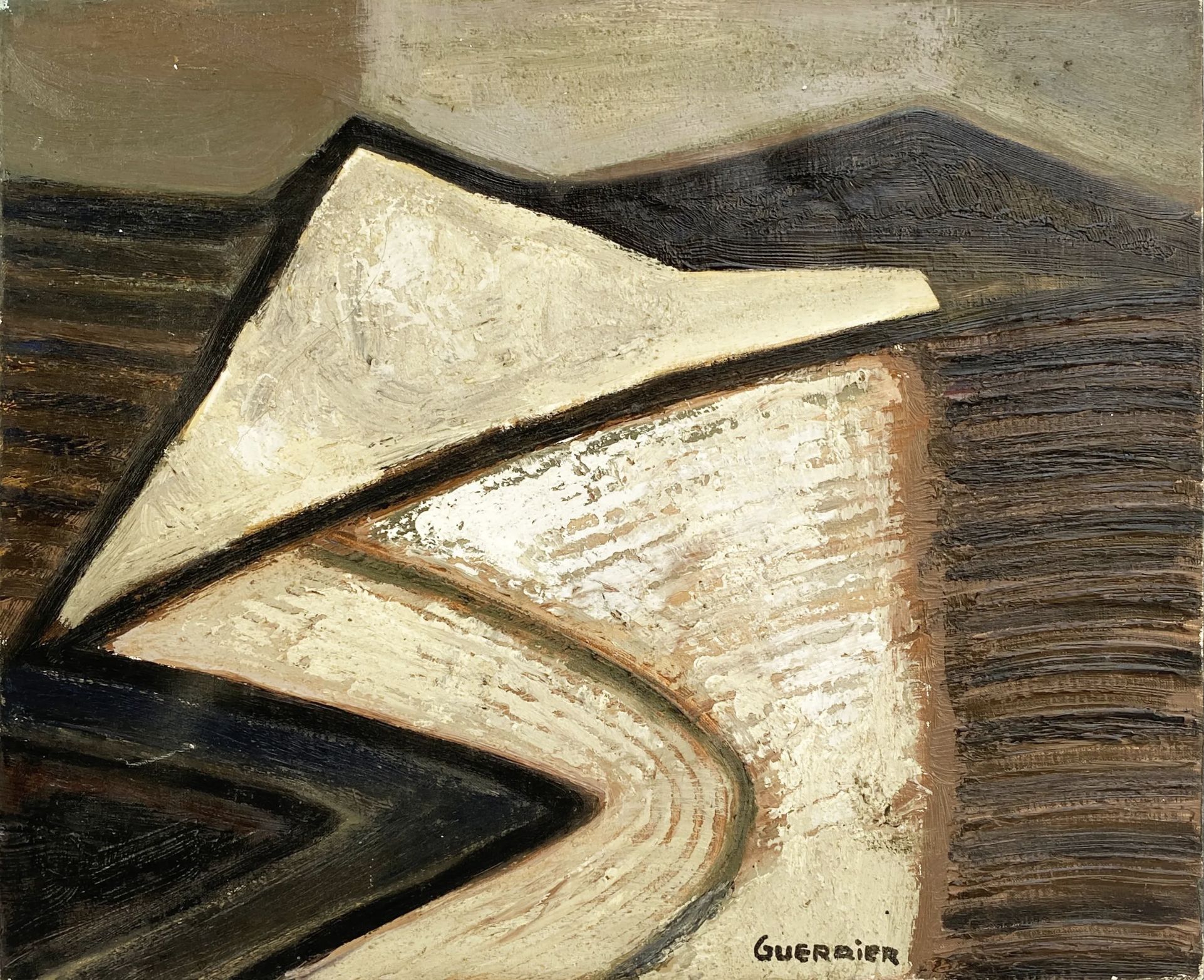
Focus sur une composition abstraite de Raymond Guerrier
Cette œuvre de Raymond Guerrier, au premier regard, se distingue par une géométrie nette et une palette de couleurs terreuses, dominée par des teintes brunes et beiges.
La composition évoque un paysage abstrait, où la notion de réalité semble s’éloigner au profit d’une interprétation plus intime et introspective.
Guerrier joue ici avec les formes angulaires et les lignes courbes, créant un contraste saisissant qui dynamise l’espace pictural tout en conservant une certaine sobriété.
Le travail sur la matière est particulièrement remarquable. La texture épaisse de la peinture, apposée par couches successives, donne à la surface une richesse tactile qui invite à une lecture plus profonde.
Chaque coup de pinceau semble calculé pour accentuer la tension entre les différentes zones du tableau, où les masses de couleur claire et foncée se confrontent tout en s’harmonisant.
L’utilisation de la ligne noire, qui délimite les formes, rappelle l’influence du cubisme, un mouvement que Guerrier a sans doute assimilé dans sa quête de simplification des formes.
L'abstraction lyrique de cette œuvre fait écho à d'autres figures majeures de l'École de Paris, comme Serge Poliakoff ou Nicolas de Staël, dont la recherche sur la couleur et la forme, bien que différente dans l’intensité des tonalités, partage avec Guerrier cette volonté de transcender le motif pour atteindre l'essence même du paysage.
Ici, l’artiste ne se contente pas de représenter un lieu, mais propose une vision subjective, presque universelle, d’un espace qui pourrait être à la fois terrestre et spirituel
Le tableau évoque également un sentiment de mouvement, avec ses courbes sinueuses qui semblent se déployer en spirale vers l’intérieur, capturant un instant fugace d'équilibre et de tension.
Guerrier, fidèle à son approche de la peinture, parvient à synthétiser l’émotion brute du paysage sans s’attacher aux détails figuratifs. Le spectateur est ainsi invité à plonger dans cette abstraction, à se laisser emporter par l'énergie douce et méditative qui émane de l’œuvre.
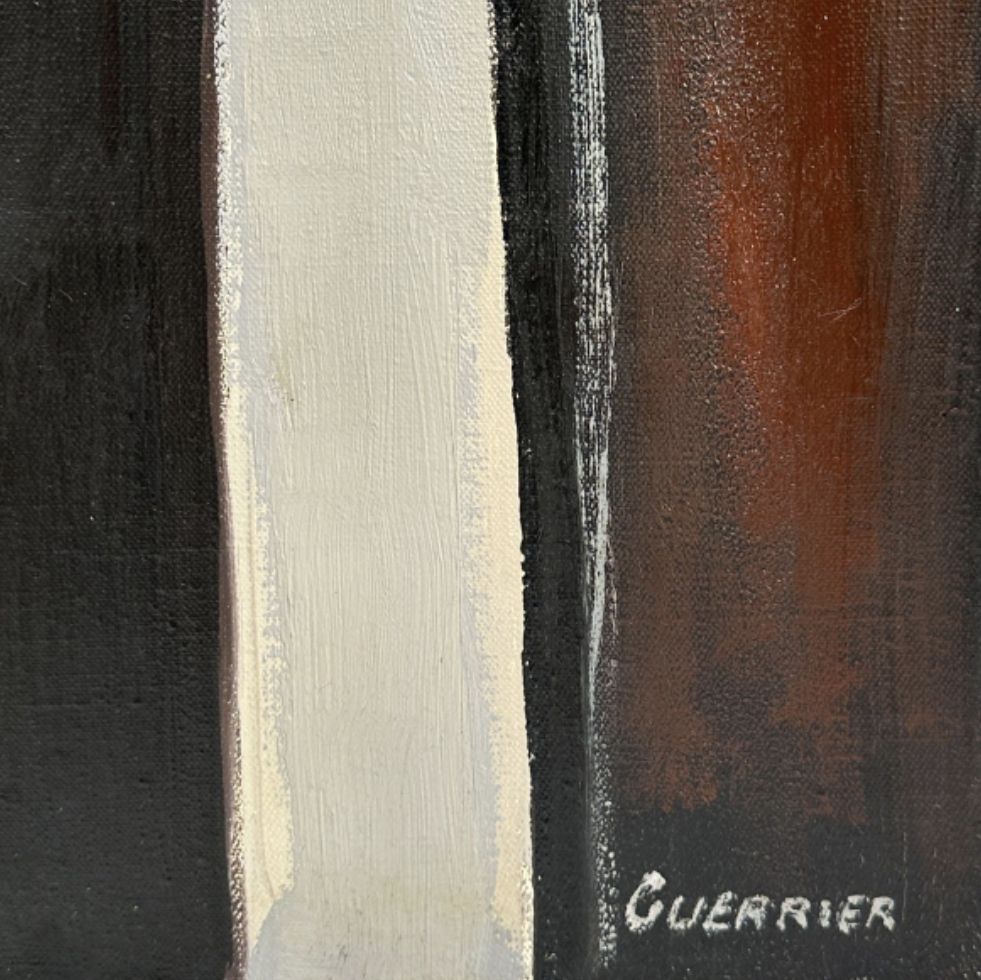
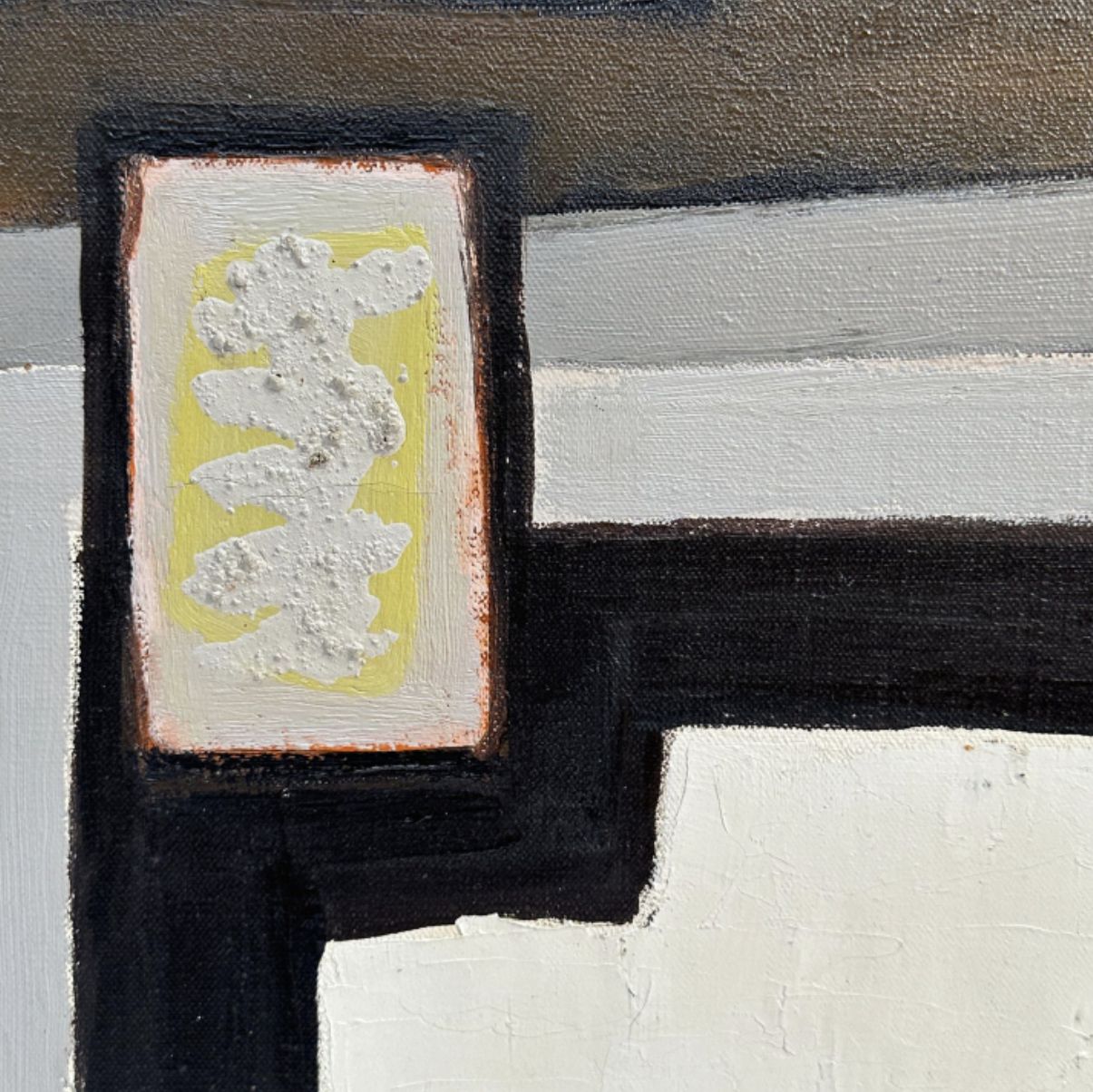
L'héritage de Raymond Guerrier sur l’École de Paris
Raymond Guerrier a laissé une empreinte indélébile sur l’École de Paris, particulièrement à travers son approche rigoureuse de la géométrie et de la couleur. Son travail, marqué par une quête d'harmonie entre abstraction et figuration, a influencé de nombreux artistes de sa génération.
Parmi eux, des peintres comme André Lanskoy et Serge Poliakoff, qui partagent cette volonté de structurer l’espace pictural tout en explorant les contrastes chromatiques.
Guerrier, tout en restant fidèle à la lumière du sud de la France, a su conjuguer les leçons du cubisme avec une certaine liberté formelle, ce qui l’a rapproché d’artistes tels que Jean-Michel Coulon ou Gérard Schneider, dont l’abstraction lyrique résonne avec certaines de ses compositions plus épurées.
L’influence de Guerrier s’est également fait sentir chez des peintres comme Olivier Debré, dont l’utilisation de la couleur et la simplification des formes trouvent un écho dans l’œuvre de Guerrier.
Ses recherches autour des formes angulaires et de la texture ont contribué à enrichir le vocabulaire pictural de l’École de Paris, marquant ainsi de son empreinte une génération d'artistes qui, tout comme lui, cherchaient à réinventer le paysage et la nature morte dans une approche résolument moderne.
L’héritage de Raymond Guerrier reste ainsi bien vivant dans l’histoire de la peinture moderne française, à travers l’influence qu’il a exercée sur ses pairs et sur ceux qui ont suivi son sillage.
Sa signature
Les œuvres de Raymond Guerrier ne sont pas toutes signées.
Même s’il y existe des variantes, voici un premier exemple de sa signature :

Expertiser votre bien
Si vous êtes propriétaire d'une œuvre de Raymond Guerrier, n'hésitez pas à solliciter une évaluation gratuite en remplissant notre formulaire en ligne.
Un membre de notre équipe, composée d'experts et de commissaires-priseurs agréés, vous contactera pour vous fournir une estimation de la valeur marchande de votre œuvre.
Si vous envisagez de vendre votre œuvre, nos spécialistes vous guideront également à travers les différentes alternatives disponibles pour obtenir le meilleur prix possible, en tenant compte des tendances du marché et des spécificités de chaque œuvre.
Réponse en - de 24h
A découvrir dans la même thématique
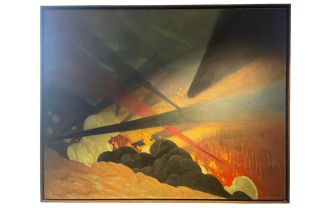
Cote et valeur des oeuvres, dessins, gravures, peintures de...
Félix Vallotton est un peintre nabi du début du XXème siècle, qui a produit beaucoup d'oeuvres. Leur valeur et leur cote sont élevées aux enchères.
En savoir plus >
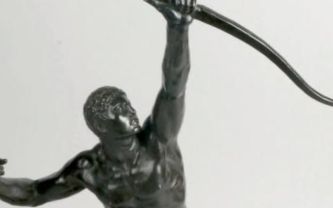
Cote et valeur des oeuvres, dessins, sculptures de Léon Driv...
Léon Driver est un sculpteur et dessinateur suiveur de Rodin qui a produit beaucoup d'œuvres cotées sur le marché des enchères. Estimation en 24h.
En savoir plus >
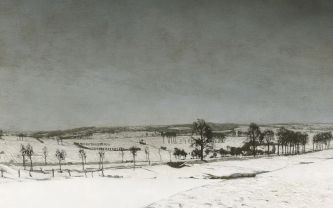
Cote et valeur des tableaux, dessins, peinture de Valerius d...
Valerius de Saedeleer est un peintre expressionniste belge qui a produit des oeuvres dont la cote et la valeur sont élevées. Estimation 24h.
En savoir plus >
Site sécurisé, anonymat conservé
Commissaire-priseur et expert agréé par l'État
Estimations gratuites et certifiées

